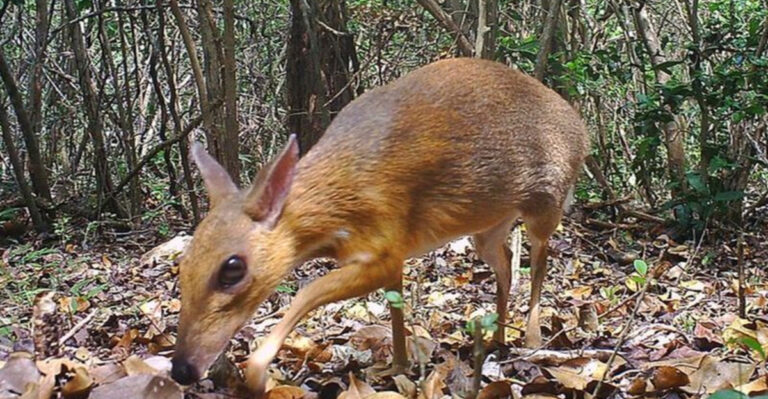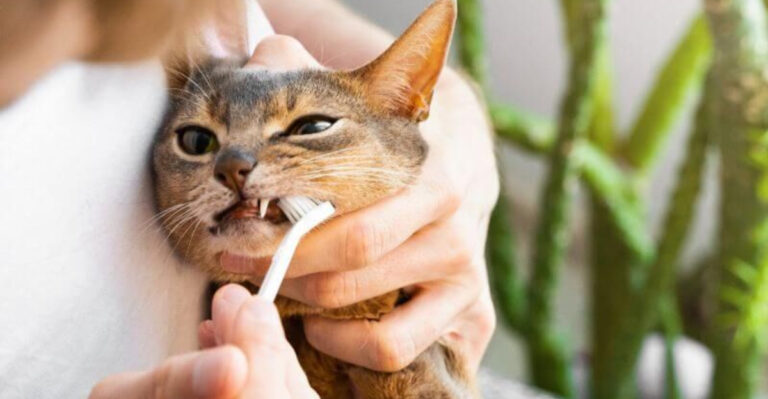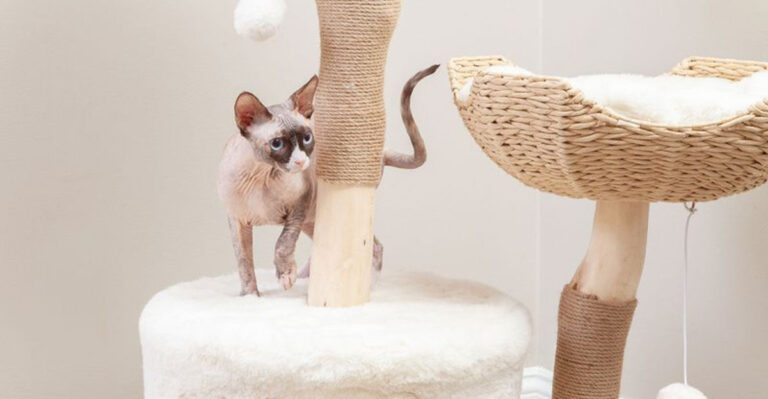15 Reasons Sea Otters Are Some Of The Coolest Creatures
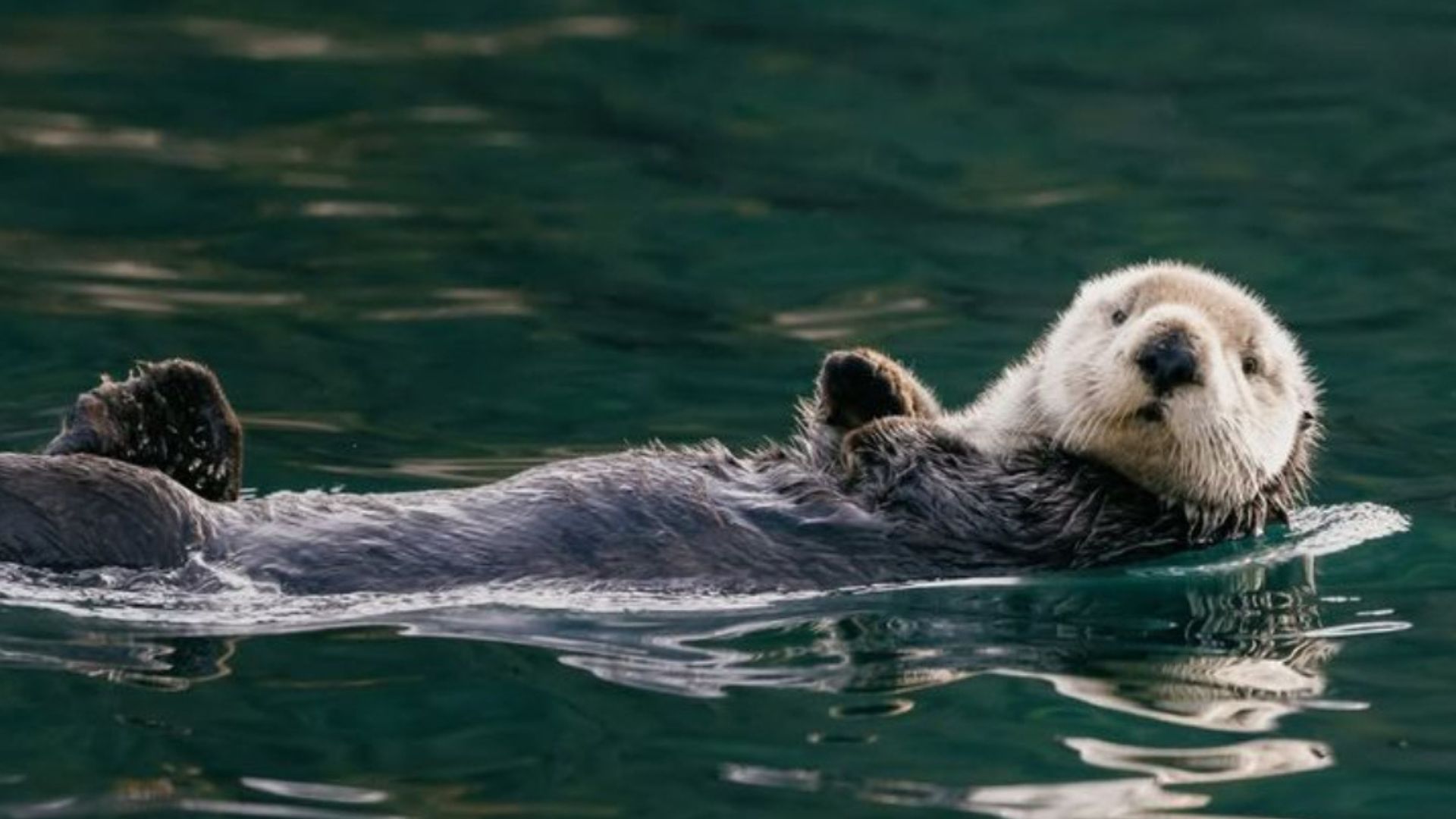
Sea otters are fascinating creatures that captivate the hearts and imaginations of nature enthusiasts worldwide.
Known for their playful antics and vital role in marine ecosystems, these charismatic mammals are much more than just adorable faces.
Join us on an exploration of just some of the reasons why sea otters are some of the coolest creatures you’ll ever encounter, and discover how they contribute to the vibrant tapestry of life in the ocean.
1. Playful Personalities
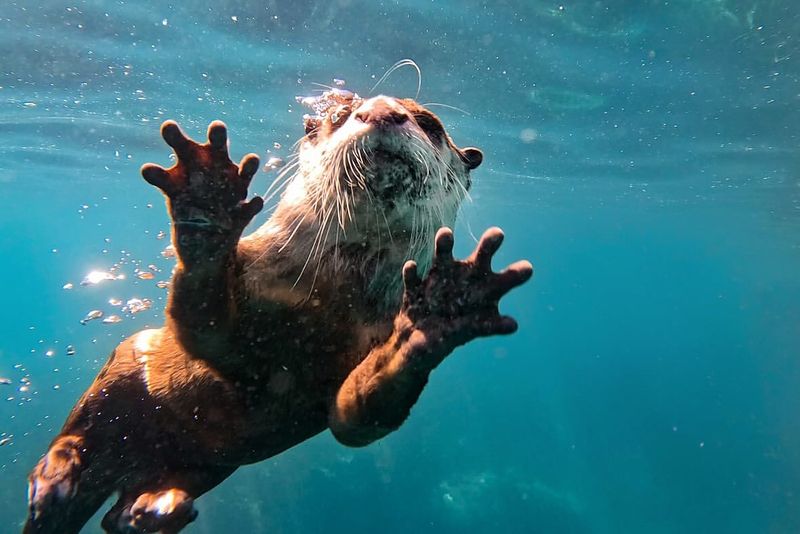
Sea otters are the clowns of the marine world, always up to some form of playful mischief. Their innate curiosity leads them to interact with their environment in the most entertaining ways, keeping onlookers endlessly amused. Floating on their backs, they juggle rocks, twirl about in the water, and engage in social grooming that strengthens their familial bonds. It’s as if they spend their days performing a never-ending comedy show just for us!
These playful creatures are not only entertaining but also highly intelligent. Their antics are more than just fun and games; they demonstrate problem-solving abilities that are remarkable for animals in the wild. For instance, sea otters are known to use rocks as tools to crack open shellfish, showcasing their ability to adapt and innovate. Such cleverness only adds to their charm, making them a favorite among animal lovers.
When you watch a sea otter at play, you can’t help but smile. Their joyous antics remind us that life is meant to be enjoyed, and sometimes, a little silliness is exactly what’s needed to brighten our day.
2. Environmental Guardians
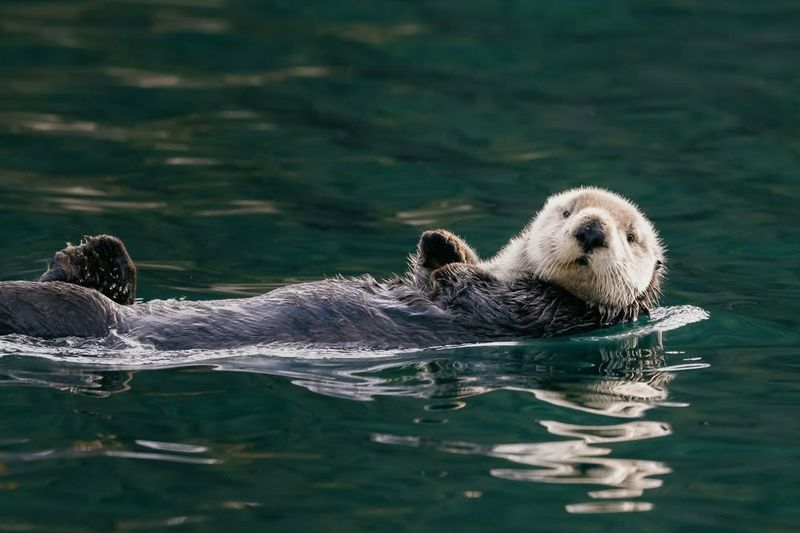
One of their most significant contributions is their ability to control sea urchin populations, which, without natural predators, can devastate kelp forests. By feasting on these spiny creatures, otters ensure that kelp forests flourish, providing habitats for a diverse array of marine life.
A thriving kelp forest not only supports marine biodiversity but also acts as a carbon sink, helping to mitigate climate change impacts. This makes the presence of sea otters in these ecosystems even more crucial. Their predatory habits inadvertently foster a healthier environment, benefiting both aquatic and terrestrial life forms.
Sea otters’ role as environmental guardians highlights the interconnectedness of nature. Their presence in the ecosystem is a reminder of how important each species is to the health of our planet. As they float in serene harmony with their surroundings, they unknowingly protect the very foundation of the marine world, making them true stewards of the ocean.
3. Thickest Fur In The Animal Kingdom
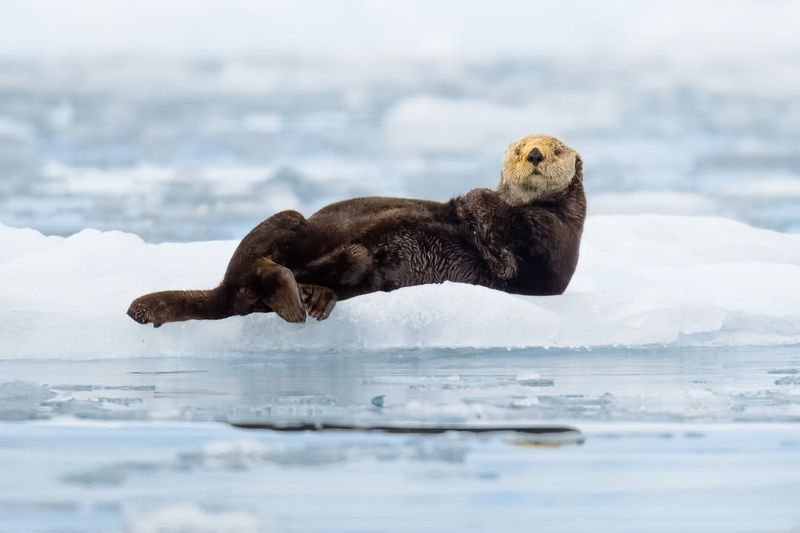
Boasting the thickest fur in the animal kingdom, sea otters have a natural advantage when it comes to staying warm in chilly ocean waters. Unlike other marine mammals, they lack a thick layer of blubber to insulate them from the cold. Instead, their dense fur, featuring up to a million hair strands per square inch, serves as their primary defense against the elements.
This luxurious fur not only keeps them warm but also provides buoyancy, allowing them to float effortlessly on the water’s surface. It’s a marvel of nature’s engineering, showcasing how animals adapt to their environments in ingenious ways. The fur’s special properties make it a subject of scientific interest, as researchers study its structure to inspire new materials and technologies.
However, the beauty of sea otter fur has also made them targets for hunters in the past, leading to near extinction. Conservation efforts have since worked to protect these creatures, ensuring that their fur remains a symbol of resilience and adaptation in the natural world, rather than a commodity for human consumption.
4. Social Butterflies
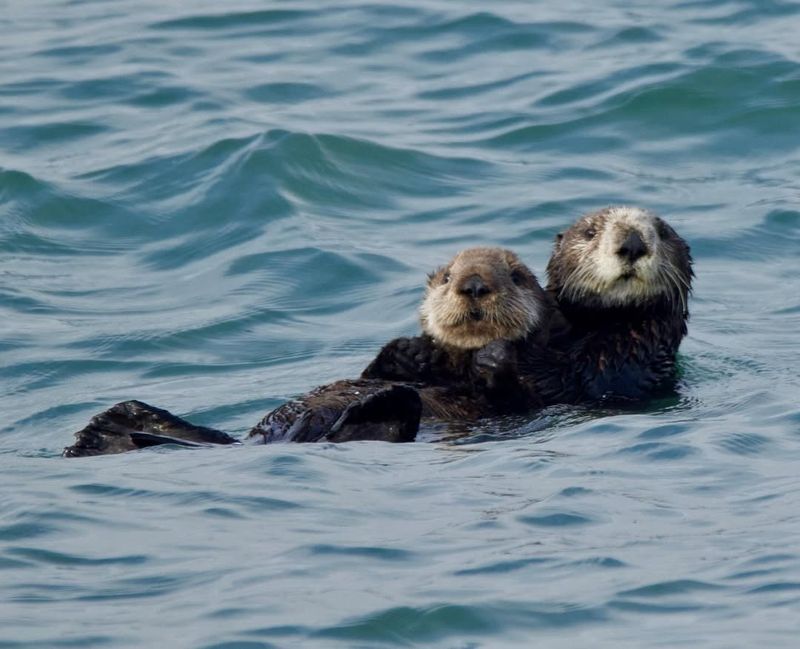
Sea otters are the social butterflies of the ocean, often seen floating together in groups known as rafts. These gatherings can include up to 20 individuals, all holding paws to prevent drifting apart. It’s a heartwarming sight, reminiscent of a close-knit family picnic on a sunny day. This social behavior is not just for companionship but also serves as a survival strategy in the wild.
Holding paws while resting or sleeping helps sea otters stay together, reducing the risk of being swept away by currents. It’s a practical yet adorable solution to a common challenge faced by these marine mammals. This habit also strengthens social bonds and fosters cooperation among group members, enhancing their chances of survival.
The sight of sea otters holding paws is more than just a cute spectacle; it’s a testament to the power of community and collaboration in the animal kingdom. Their cooperative nature serves as a reminder that sometimes, the best way to face challenges is together, hand in paw (or hand, in our case).
5. Masterful Tool Users
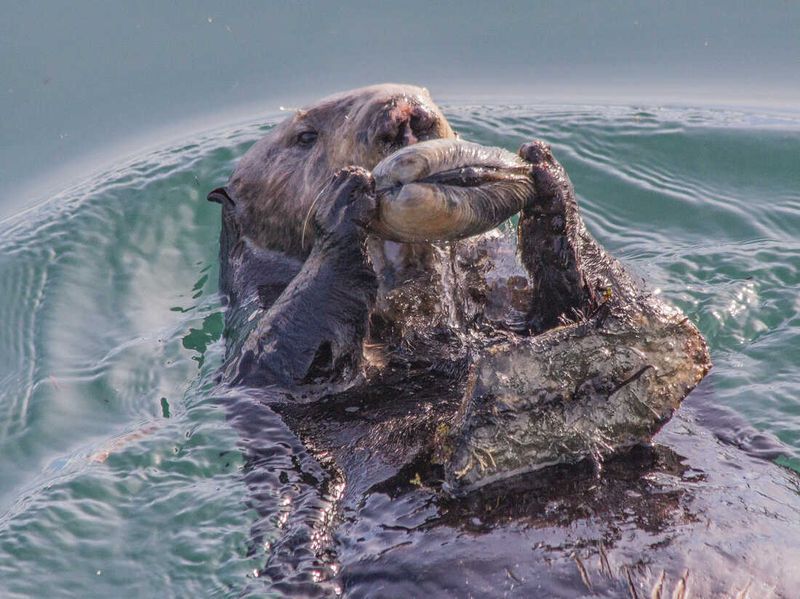
In the animal kingdom, only a select few species have developed the ability to use tools, and sea otters are among them. These marine mammals exhibit remarkable dexterity and intelligence, using rocks to crack open shellfish and access the nutritious meat inside. It’s a skill that showcases their adaptability and problem-solving prowess.
Sea otters have a special pouch under their forearms where they store their tools, making them highly efficient hunters. This unique adaptation allows them to carry their favorite rock along wherever they go, ready to tackle the next hard-shelled challenge. It’s a behavior that highlights not only their resourcefulness but also their forward-thinking nature.
The use of tools by sea otters is a fascinating example of animal ingenuity and serves as a reminder of the clever ways in which different species adapt to their environments. It also underscores the importance of preserving their habitats, ensuring that these incredible creatures can continue to thrive and innovate in the future.
6. Kelp Forest Protectors
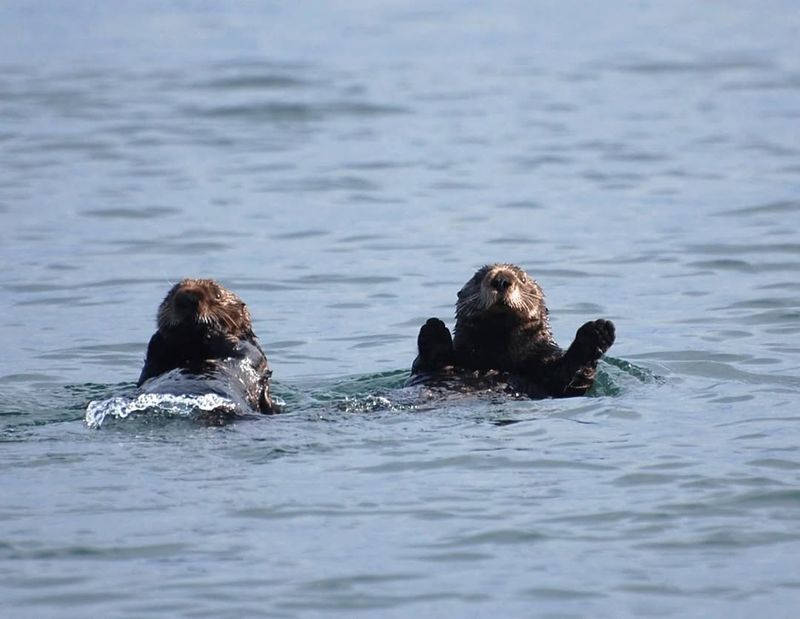
Sea otters play a pivotal role in protecting and maintaining kelp forests, one of the most productive ecosystems on Earth. By preying on sea urchins, they prevent these voracious herbivores from overgrazing the kelp, allowing the forest to thrive. This balance is essential for the health of the marine environment, supporting countless species and fostering biodiversity.
The presence of sea otters in kelp forests also provides shelter and food for a wide variety of marine life. Fish, invertebrates, and even some bird species rely on these lush underwater forests for survival. The otters’ role in maintaining this delicate balance highlights their importance as keystone species in their ecosystems.
Without sea otters, kelp forests would be at risk of collapsing, leading to devastating consequences for the marine life that depends on them. Their work as protectors of these vital habitats underscores the interconnectedness of nature and the need to conserve every link in the ecological chain. In essence, sea otters are the guardians of underwater wonders.
7. Adorable Appearance
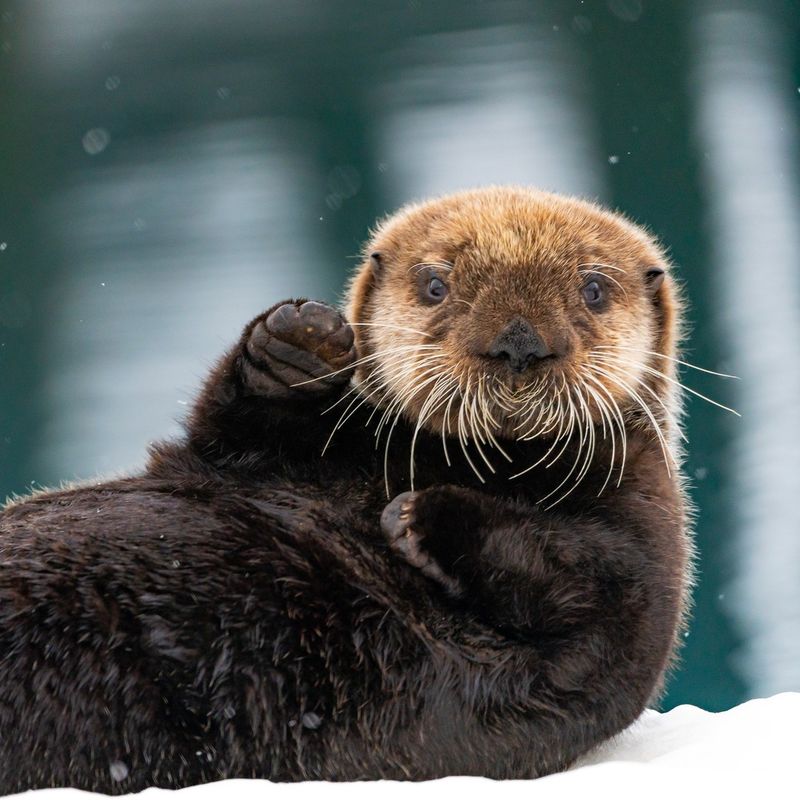
With their round faces, expressive eyes, and seemingly perpetual smiles, sea otters have an undeniable charm that captures hearts worldwide. Their adorable appearance makes them the poster children for marine conservation efforts, drawing attention to the need for preserving their habitats. It’s hard to resist the allure of these charming creatures, whose faces seem to exude joy and wonder.
Beyond their cuteness, sea otters’ facial features serve a practical purpose. Their whiskers are highly sensitive, allowing them to detect prey in murky waters. This adaptation is vital for their survival, enabling them to hunt effectively in their aquatic environment. Yet, it’s their endearing expressions that often steal the show.
The combination of cuteness and functionality makes sea otters an intriguing subject of study, as scientists seek to understand the evolutionary advantages of their features. For the casual observer, however, their irresistible faces are a reminder of the beauty and diversity of life in our oceans, inspiring efforts to protect these and other marine species.
8. Superb Swimmers
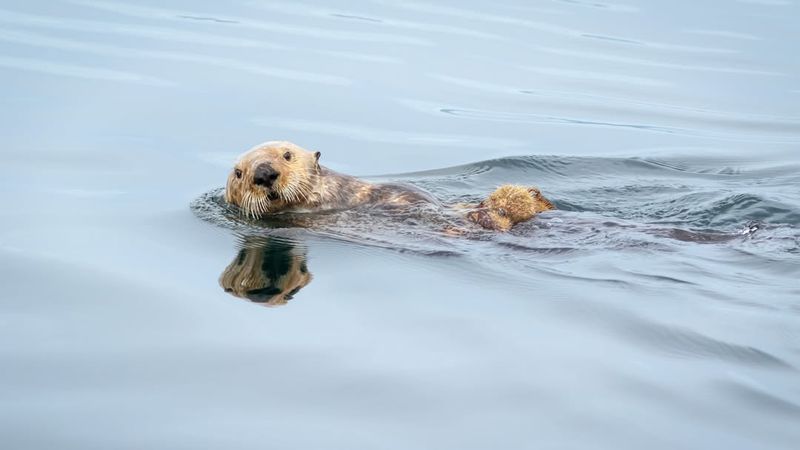
Sea otters are superb swimmers, built for life in the water. Their streamlined bodies and webbed feet allow them to move gracefully and efficiently through the ocean. Whether they’re diving for food or simply frolicking in the waves, their swimming prowess is a testament to their adaptation to the marine environment.
These agile swimmers can hold their breath for up to five minutes, diving to depths of 60 feet in search of food. Their ability to navigate the underwater world with such ease is crucial to their survival, allowing them to exploit resources that other predators might overlook. This skill also makes them fascinating to watch, as they zip through the water with apparent effortlessness.
The swimming capabilities of sea otters are not just impressive but also essential to their role in the ecosystem. As they move through kelp forests and other marine habitats, they help maintain the balance of these environments, ensuring the health and vitality of the ocean. Their mastery of the aquatic realm is a key aspect of their coolness.
9. Vocal Communicators
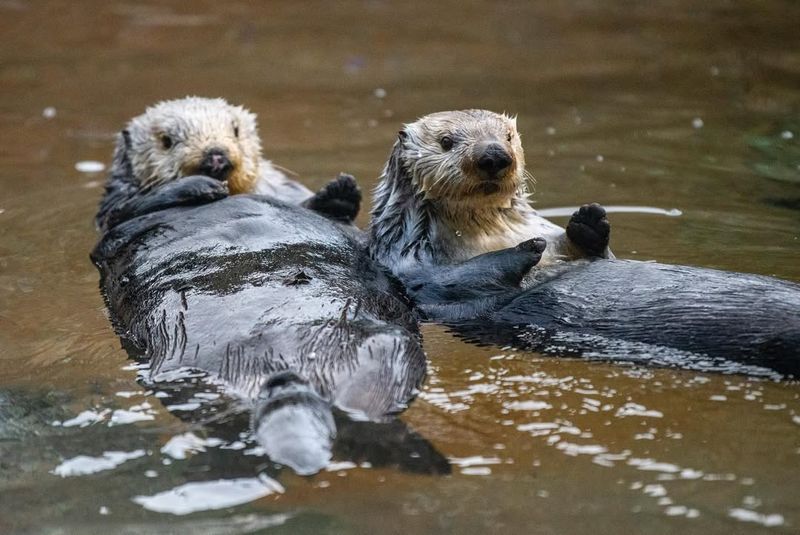
These charismatic creatures communicate with one another using a variety of sounds, from soft coos to loud chirps and growls. Each vocalization serves a different purpose, whether it’s to signal distress, call for a mate, or simply engage in a bit of friendly chatter.
The complexity of their vocal repertoire reflects the social nature of sea otters. In a world where effective communication can mean the difference between life and death, their vocal skills are finely tuned to convey important messages. These sounds are often accompanied by body language, creating a rich tapestry of interaction that is fascinating to observe.
As vocal communicators, sea otters remind us of the importance of connection and understanding in the animal kingdom. Their ability to express themselves so vividly enhances their charm and provides insights into the intricate social dynamics of wildlife. It’s a symphony of sound that adds another layer to the already captivating world of these remarkable creatures.
10. Dedicated Parents
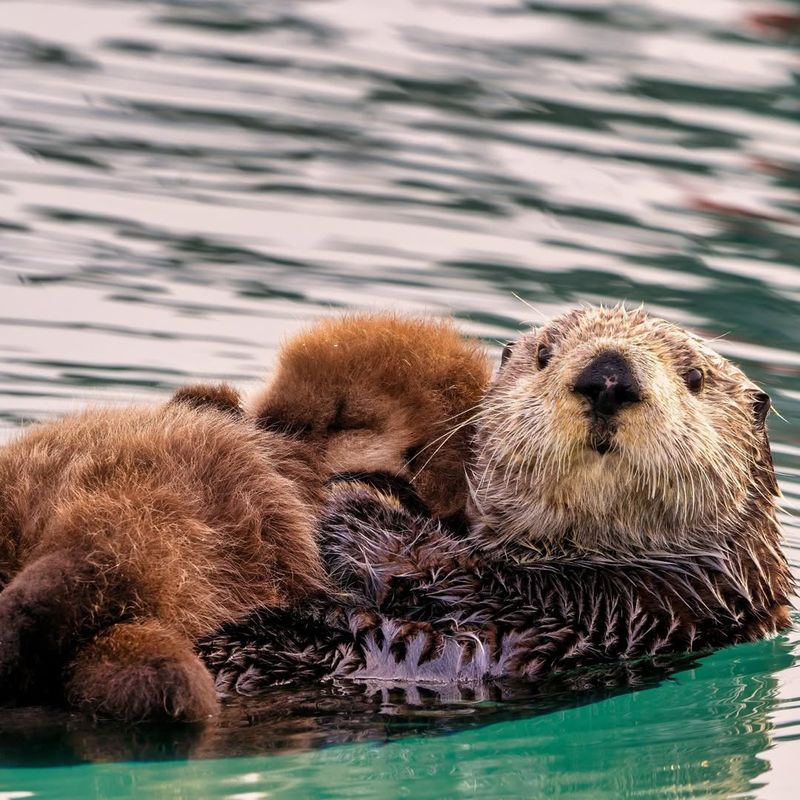
Sea otters are known for their dedication to parenting, with mothers displaying exceptional care and affection for their young. From the moment a pup is born, it becomes the center of its mother’s world. She cradles her baby on her belly as they float together, grooming it meticulously to ensure its fur remains clean and insulating.
The bond between mother and pup is both heartwarming and essential for the youngster’s survival. Sea otter pups are born helpless and rely entirely on their mothers for nourishment and protection. This nurturing behavior continues for several months, during which the mother teaches her pup vital skills for independent living, such as hunting and grooming.
The dedication of sea otter mothers is a testament to the powerful instincts that drive animal behavior. Their unwavering commitment to their young serves as an inspiring example of parental care in the wild, highlighting the universal importance of family bonds in ensuring the continuity of life. It’s a touching reflection of love and care in the animal kingdom.
11. Remarkable Divers
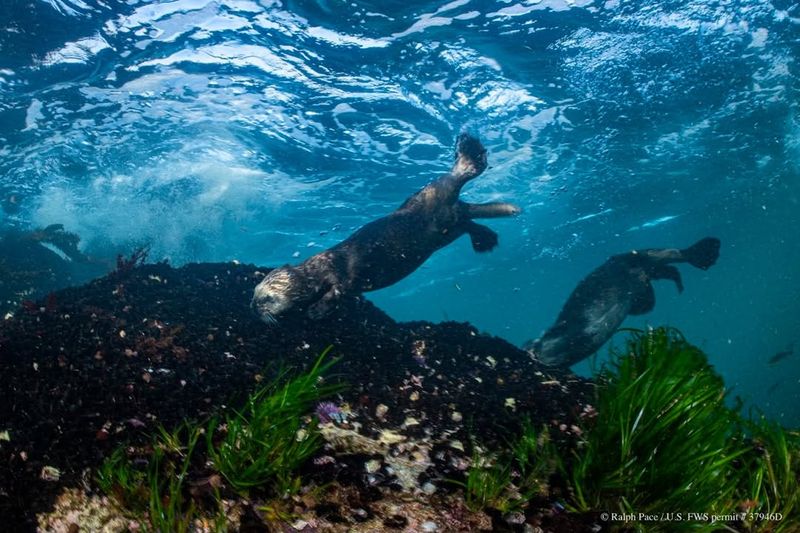
Their ability to hold their breath for extended periods allows them to dive as deep as 60 feet, searching for food on the ocean floor. This diving skill is essential for their survival, enabling them to reach prey that other predators might miss.
The physiological adaptations that enable their diving prowess are fascinating. Sea otters have large lung capacities and the ability to slow their heart rates, conserving oxygen during dives. This makes them efficient hunters, able to stay submerged long enough to forage effectively and return to the surface with a meal.
Their diving skills are not just a testament to their physical capabilities but also to their role in the marine ecosystem. By accessing resources that are out of reach for many species, sea otters help maintain the balance of their environment, ensuring the health and diversity of ocean life. It’s yet another reason why these creatures are so cool and captivating.
12. Pioneer Conservationists
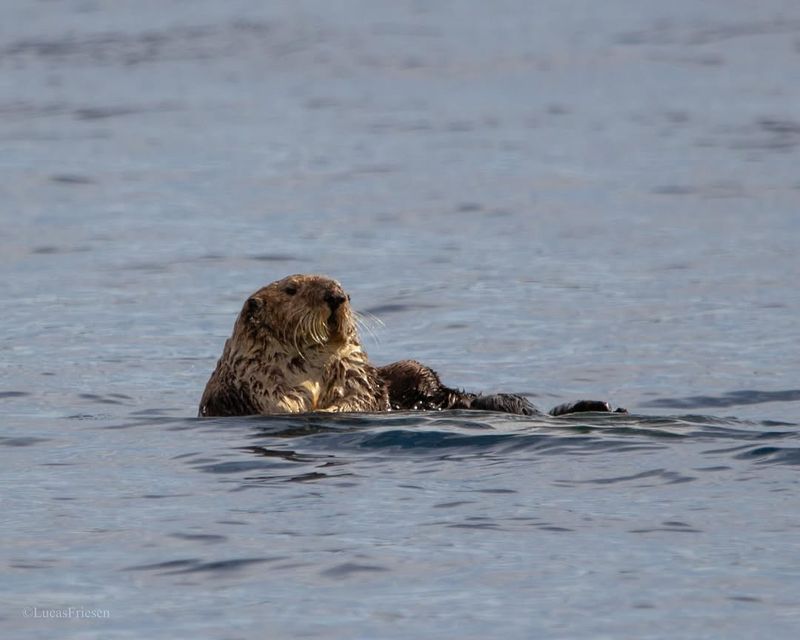
Their recovery from near extinction due to hunting has been a notable success story, highlighting the impact of dedicated conservation efforts. These efforts have led to the establishment of protected areas where sea otters can thrive.
In these marine sanctuaries, researchers study sea otters to gain insights into their behavior and the health of their ecosystems. This research not only aids in understanding sea otters themselves but also provides valuable information for the broader field of marine conservation. Their presence in these areas helps gauge the success of conservation initiatives.
As pioneer conservationists, sea otters serve as ambassadors for the importance of preserving our oceans. Their story of recovery is an inspiring reminder of what can be achieved when humans commit to protecting the natural world. It’s a legacy that encourages continued efforts to safeguard marine habitats for future generations.
13. Floating Nurseries
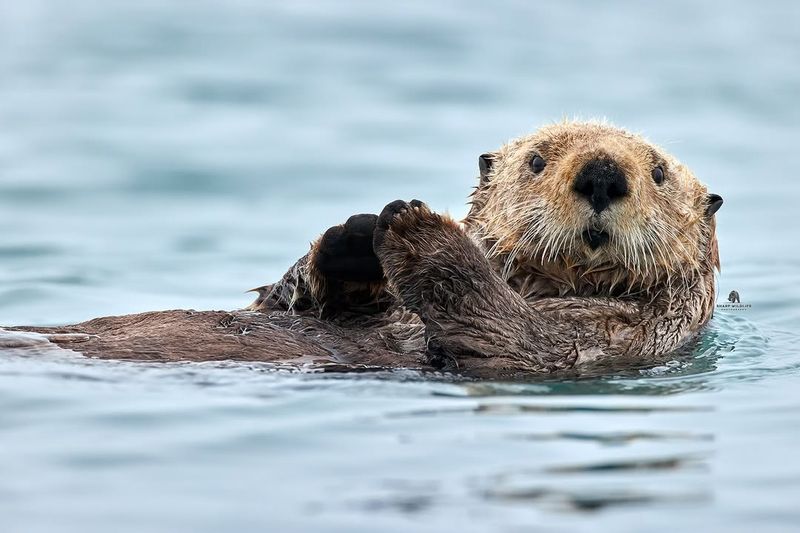
Sea otters have a unique approach to parenting, often creating floating nurseries where mothers care for their pups. These nursery sites are areas within calm waters, often surrounded by kelp, where sea otter moms can safely nurse and groom their young without the threat of predators.
The calm environment of these floating nurseries is crucial for the development of sea otter pups. Here, they learn essential skills from their mothers, gaining the confidence needed to thrive in the open ocean. The pups’ fluffy fur, which provides buoyancy, keeps them afloat while the mothers dive for food.
The concept of floating nurseries highlights the ingenuity of sea otters in ensuring the safety and well-being of their offspring. It’s a testament to their adaptability and the lengths they go to protect their young. This nurturing environment is yet another charming aspect of sea otter life, showcasing their cool and caring nature.
14. Oceanic Ecosystem Engineers
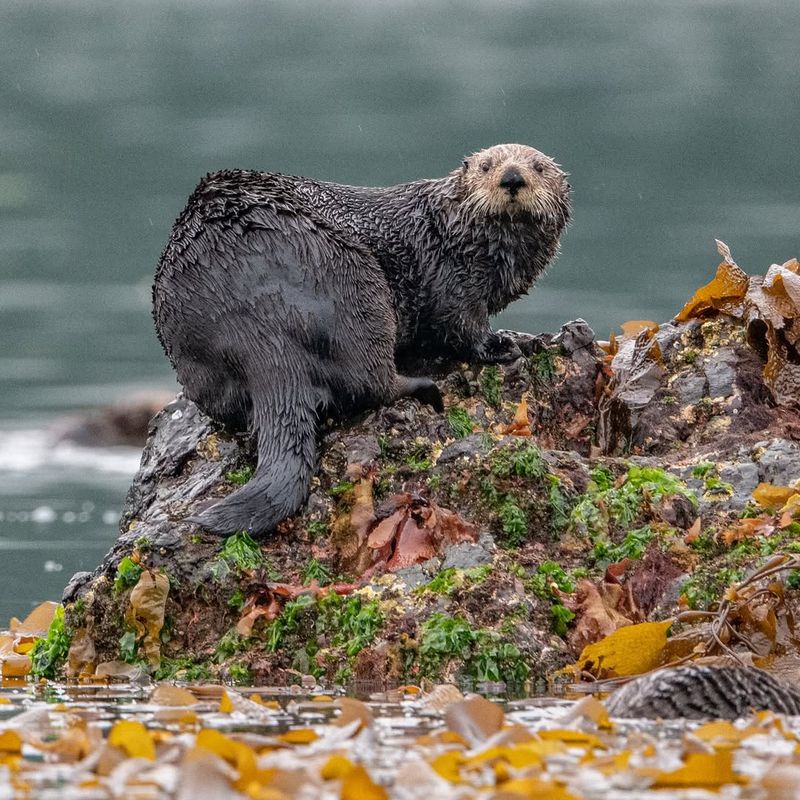
Sea otters are considered oceanic ecosystem engineers due to their profound impact on the marine environments they inhabit. By controlling populations of sea urchins and other invertebrates, they facilitate the growth and health of kelp forests. These underwater forests are vital for maintaining biodiversity, serving as habitats for numerous species.
The presence of sea otters helps sustain a balanced ecosystem, allowing various marine life forms to flourish. This balance is essential for the overall health of the ocean, as kelp forests contribute to carbon sequestration and act as a buffer against coastal erosion. Sea otters, through their predatory habits, support these crucial ecological functions.
As oceanic ecosystem engineers, sea otters exemplify the interconnectedness of life in the ocean. Their influence extends beyond their immediate surroundings, making them key players in the maintenance of healthy marine ecosystems. Their role underscores the importance of protecting these charismatic creatures as vital components of the ocean’s biological machinery.
15. Survivors Of Adversity
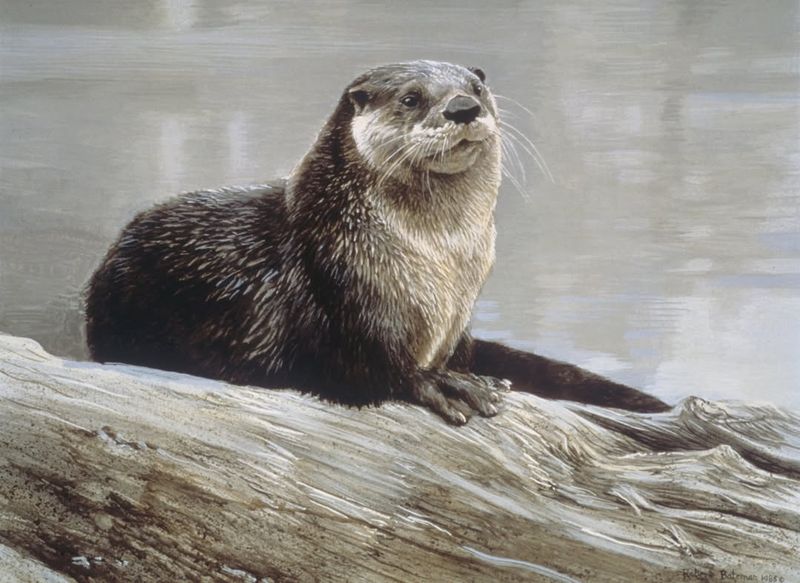
Once hunted to the brink of extinction for their fur, they have made a remarkable comeback thanks to dedicated conservation efforts. Their story of survival is a testament to their adaptability and the impact of human intervention in the natural world.
The challenges faced by sea otters have not diminished their spirit. Despite past adversities, they continue to thrive in their ocean habitats, navigating the waves with grace and determination. Their presence today is a symbol of hope and the potential for recovery when humans prioritize conservation.
As survivors of adversity, sea otters remind us of the fragility of nature and the resilience of life. Their journey from near extinction to a thriving population is inspiring, underscoring the importance of continued efforts to protect and preserve our planet’s diverse ecosystems. It’s a story of triumph that resonates with all who cherish the natural world.


